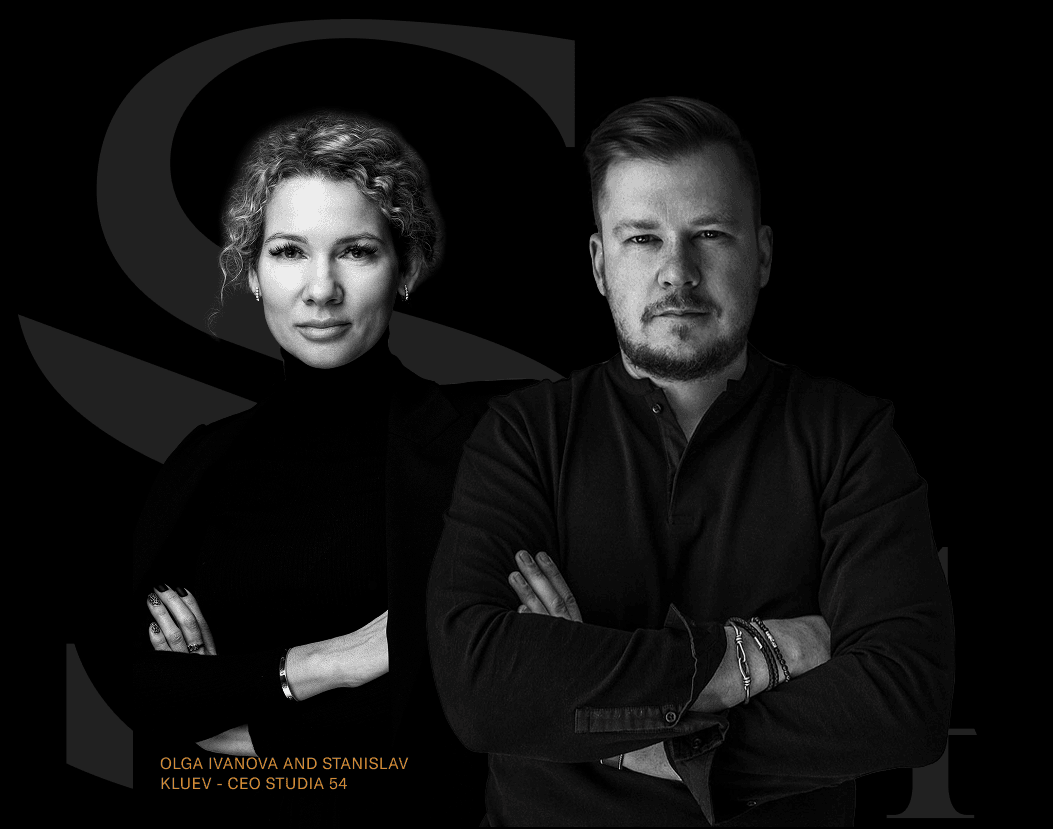/ Interior
~ 7 min
Published: 24/11/2025
The distinctive Studia 54 interior style took shape back in 2017. Even so, we continue to follow global trends, study new furniture releases, and listen closely to the wishes of our clients. All of this allows us to grow, refine our approach, and keep surprising you.
Recently, we published an article on premium architecture trends for 2026 — and today, it’s time to talk about interior design.
Over the past 10 years, Studia 54 has completed 650 projects and created more than a thousand sketches of lighting installations and sculptures. We have explored different cultures and experimented continuously, which helped us form a signature style recognized worldwide. Moreover, we are able to anticipate many trends — and even set our own.
Trend 1: Dramaturgy — expressing personality through interior design
Today, trends serve more as recommendations than strict directions to follow. In the past, they were replicated everywhere — until they turned into standard solutions and lost their sense of novelty.
To keep an interior timeless, personalization becomes the leading principle. We use a “dramaturgy” approach, where the interior tells the client’s story. Separate design elements come together as a unified composition with its own narrative, atmosphere, and emotional impact.
For every project, our team develops exclusively bespoke solutions shaped around the client’s lifestyle and wishes. This is how truly unique interiors are born, spaces that inspire and remain relevant for years to come.
Trend 2: A space that tells a story
Because a premium interior should reflect the owner’s personality, the selection of décor and furniture requires exceptional care.
Many clients come to us with a request to create a special place for their collections. A space where they can display meaningful items: travel souvenirs, awards, treasured gifts.
A shelving unit can function as a classic storage system while also becoming an independent art object. For example, in a Vietnamese apartment we designed, the back panel of the shelving was hand-painted and finished with a glossy coating. The surface resembles a precious gilded fresco behind glass. The horizontal dividers were upholstered in terracotta velvet — a key accent throughout the entire interior. This detail helped unify the space into a cohesive composition.
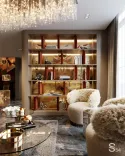
Beyond décor, furniture can also tell a story. The signature piece of the premium furniture brand FiftyFourms is the Blossom table. Its design was inspired by a romantic tale: an Eastern prince wanted to give his beloved a symbolic gift. Something that would remind her of the lotus flower from the day they first met. The designers at FiftyFourms created a table shaped like a water lily in response to that sentiment.
Would you like your interior to tell your story in the coming year?
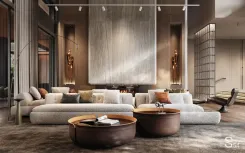
Trend 3: Light as a work of art
One of the defining features of the Studia 54 style is the use of complex compositional accents. These can be created through layout decisions, furniture arrangements, and, most powerfully, through lighting.
For us, light is a work of art — something that cannot be repeated twice.
For every project, our team develops bespoke sketches for art objects, sculptures, and lighting installations. We adapt to the size of the space, engineering constraints, the client’s wishes, and the atmosphere they want to achieve.
For example, in our project in Vietnam, the client dreamed of a luxurious chandelier, yet we faced numerous challenges: ceiling height, engineering limitations, and a complex zoning layout. To bring the client’s vision to life, we designed a chandelier composed of multiple segments and made it appear weightless using hundreds of glass and metal tubes. It casts a mesmerizing play of light and shadow — and exists as a one-of-a-kind piece.
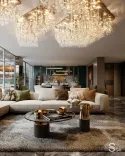
For a residence in Saudi Arabia, we created a chandelier sketch inspired by natural motifs central to the project’s concept. Its creation goes through many stages — from the initial idea to intricate metalwork. Such pieces always leave a lasting impression, and we can confidently say: they will certainly inspire others to replicate them.
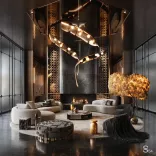
Personalization remains the very tool that sets new trends.
Trend 4: Natural luxury
The trend toward sustainability has been around for years — and you might ask: where is the luxury in that? Our answer is simple: in its unpredictability.
Natural materials are shaped by the elements, which makes them both precious and challenging to work with. Their character cannot be replicated, and this uniqueness becomes the new form of luxury.
Quartzite, for example, is an exceptionally durable natural stone with a rich palette of colors. Its strength and striking beauty make it one of the finest materials we use in our interior projects.

The countertop is made of quartzite
Onyx, with its luminous texture and captivating hues, remains a hallmark of premium interiors. It naturally transmits light, transforming into a true chameleon within a space — elegant, atmospheric, and undeniably distinctive.
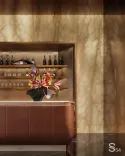
Wall made of natural onyx
Marble in interior finishes is a timeless classic — a durable natural stone that pairs beautifully with a wide range of materials.
Even two countertops produced from the same block and crafted in the same workshop will never be identical. Color, veining, and shape will always vary, because natural materials yield beautifully unpredictable results.
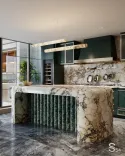
The kitchen island is custom-made from marble slab
Trend 5: Emotional color solutions
Dark interiors continue to capture the hearts of design connoisseurs. They convey a sense of luxury, privacy, and seclusion. Their depth and richness make a space feel refined and atmospheric.
To create an interior that resonates emotionally, it’s important to work not only with a client’s personal story but also with expressive color contrasts.
In 2026, burgundy will take center stage — a deep red-brown with a subtle violet undertone. Compared to classic red, it is softer, more sophisticated, and inherently luxurious.
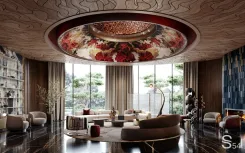
2026 is the perfect moment to create the home you’ve always envisioned.






